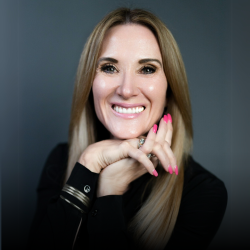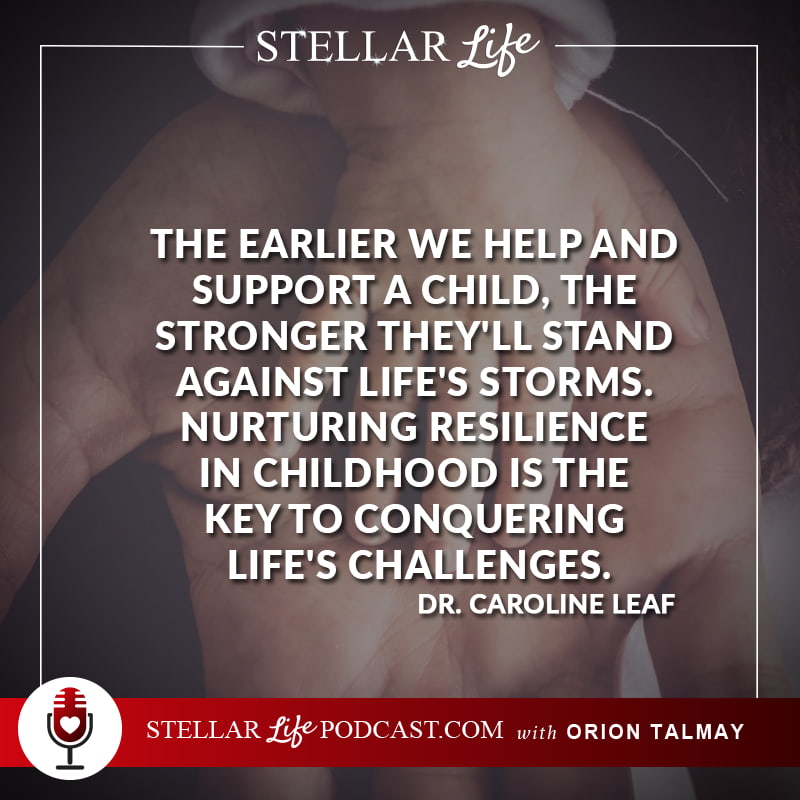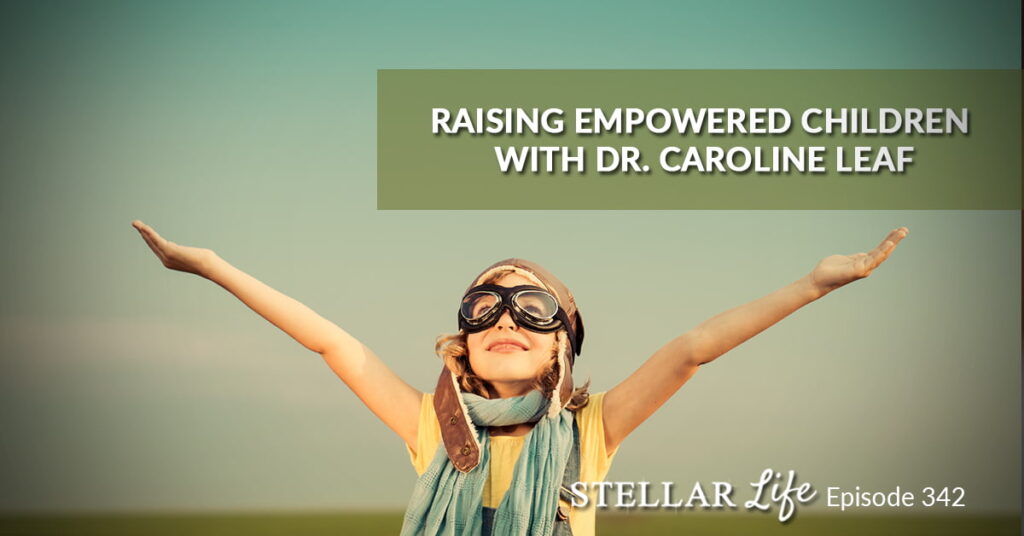
In this Episode
- [03:05]Cognitive neuroscientist and psychologist Dr. Caroline Leaf explains the importance of addressing mental health in children, citing a crisis in current management and the need for early intervention.
- [06:24]Orion talks about her mentor, Dr. John Demartini and his teachings about self-awareness.
- [10:07]Dr. Caroline suggests using the NeuroCycle technique to acknowledge and express emotions rather than suppressing them and risking irritability.
- [19:21]Dr. Caroline discusses the five steps to rewire the mind-brain connection.
- [26:16]Orion expresses concern about her son starting school after being homeschooled for four years, prompting Dr. Caroline to suggest neuroscience-based techniques to help them communicate authentically about their feelings and gather signals from each other to understand their emotions better.
- [31:50]Dr. Caroline offers advice to parents for their child to express their emotions and concerns without fear of judgment.
- [39:34]Dr. Caroline elaborates why she recommends reading stories to children to help them cope with fears and bad events rather than relying on movies or direct conversations.
- [44:47]Dr. Leaf stresses the value of giving children the tools to manage their mental health and encourages listeners to be proactive in their parenting.
About Today’s Show
Hi, Dr. Leaf, and welcome to the show. I’m very happy that you’re joining us today.
Hi, Orion. I’m very thrilled to be with you. Thanks so much for having me on your show.
Thank you. Today, we will focus mainly on your new book. Before we dive in, please share a little bit about your journey. And what brought you to your mission and what you are in the world today?
Absolutely, thank you. I’m a cognitive neuroscientist and communication pathologist. My field of research is clinical neuroscience and psychoneurobiology. All that means is that I study the mind, brain, and body connection. I still do research; I run clinical trials. I have practiced for 25 years. I don’t practice anymore because I do research and write books.
I have a mental health platform. We have a technology platform to help people get accessible and affordable access to mental health, which I think is important. I work with all ages, and my books are of all ages.
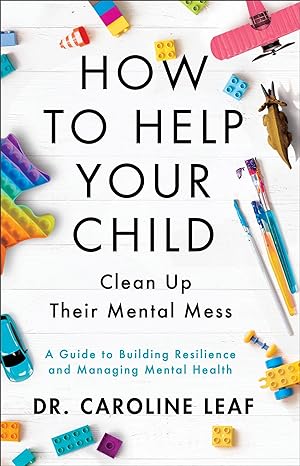
The one that’s just came out that you mentioned is How to Help Your Child Clean Up Their Mental Mess. Therefore, help children with mental health to help parents help children help themselves with their mental health because it’s been so badly handled in the last few years. As you all know, there’s a crisis and so on.
I got here with a passion for understanding and wanting to understand and learn about the brain. I was going into medicine and realized that I was not going to get enough about the mind. That fascinated me with the connection. That’s how I went into this field.
Nice. And why teach kids?
In my practice, I worked with children as young as two or three, and I have four adult children. There’s such a crisis in mental health currently, as we know that the crisis in mental health with children is a symptom of a bigger problem than adults. The bigger problem is my management. We can talk about that.
Basically, children, the way that mental health is being handled worries me. It was time to equip parents with the truth behind how they can help their child from young. The younger we start helping a child with the issues, the better they can handle the inevitable challenges of life. The messaging parents are getting is scary and not scientifically correct, so I am countering that message.
What do you think the messages that parents are getting are?
It’s a very biomedical approach. The biomedical approach started around 40 years ago. The biomedical approach, instead of going into a whole description of what is going on with the child in the environment, which is what I was trained to do for years, we’re talking about the whole family, all the relevant caretakers involved, teachers, etc., I spend a lot of time working with a child or an adult to help them understand the context of their life and so on.
That’s been very much subsumed under the medical model. The medical model basically works for things like if you’ve got diabetes, or if you’ve got Parkinson’s. It’s brilliant for medical issues or physical problems with the brain in the body. But when it comes to life experiences and the challenges of life, it’s not right. It doesn’t work with anxiety and depression on symptoms of an illness because anxiety and depression aren’t illnesses. They are warning signals that something’s going on in our lives. Instead of diagnosing, we should be describing.
Instead of diagnosing, we should be describing.
People are so quick to label, and that’s why I have a chapter in the book on labeling, trauma, and all that kind of stuff you’re going to cover. I’d rather work on things that are scientifically accurate and that aren’t presupposed. The diagnosis is not as healthy as the description. Diagnosis is very limiting for people when it comes to big issues like life challenges and experiences like depression.
Yeah. One of my mentors is Dr. Demartini. When he was young, somebody told his mom, I think it was a teacher, that he would never be able to read, write, and communicate. At 18, he went surfing in Hawaii or something like that. He met a mentor who taught him that he can do everything. I don’t know the right quote and exactly how we said it, but Dr. Demartini read over 30,000 books.
He is one of the most intelligent human beings I have ever met. Half of his vocabulary is something I have to look at in the dictionary to understand. He’s incredible. It’s so true, especially in the first few years, everybody knows that zero to seven is where we form beliefs that stick with us for the rest of our lives.
Yeah, except that we can change those beliefs. That’s the power of neuroplasticity and added some of the first neuroplasticity research back in the late 80s. The story you talked about, John Demartini, is another bit of a story. I saw so many patients like that doctors wrote off, as they would say, vegetables, which is a terrible thing to say about a patient when people have had such severe brain damage from car accidents or something like that. Or they’d say, “There’s no hope for someone who’s got such severe problems,” and you just got to teach them to compensate.
The capacity of the mind to learn is massive if we understand how to manage it and how to build our brain because the mind is doing the work.
I saw people that had that kind of label. Once you taught them how to learn, how to manage their mind, how to build memory, how to understand, and how to manage their mental health, it exceeds these things that you’re describing with John Demartini. I have so many patients that that happened to.
I’m sure you know about Jim Kwik. You may have heard of him. He just actually interviewed me, and I’ve interviewed him. He has a similar story.
The capacity of the mind to learn and the capacity of the brain, which the mind drives, is massive if we understand how to manage it and how to build our brain because the mind is doing the work. The brain just does what your mind tells it to do. You may require certain constraints and things, but we can learn these skills. We can build and overcome so much stuff, which is exciting.
Yes. As a parent, I’m trying to be conscious. I have really good days. “I’m so good.” I go to his level, and I understand his world. This morning, we went to a salt room because he was not feeling well. We played in the salt room. They have a little kids’ salt room, and it was great. We had this beautiful green organic juice. It was awesome.
We went to a bakery, and I got him a bagel, and then I forgot. I went back to take napkins, and then he dropped the bagel. He started crying, and then we went back to the bagel store. It’s Florida, it’s hot. We were walking in the parking lot, and it was super hot.
Finally, we get to the car just for me to find out that my keys are gone, and I’m freaking out. I’m 12 miles away from home. We went back, and he started being just him, like seeing me stressed. I shushed him unkindly, and I wasn’t very proud of myself. Finally, we went back to the bakery and found the keys, thank God.
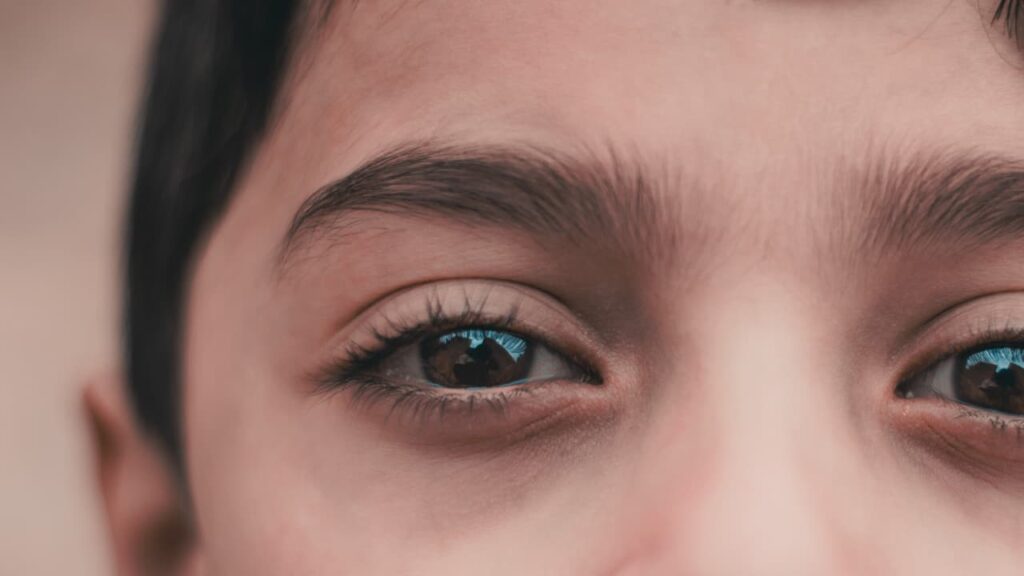
I wasn’t proud of myself for shushing him like that. It was uncalled for and not nice, and I should know better. I’ve been on this self development path for many years, and I’m still at times of stress or when things don’t go your way. You’re not sleeping well, which I haven’t in the last few nights. I don’t apply all this beautiful knowledge. What’s your advice for that?
I love you being so vulnerable and so on the set. It’s a great example because the best way to help our children with their mental health is for us to model it. You said some key things. You said that your stress with a child was picking up, and that is what happens. Our children pick up our stress level. The anxiety, the wellness, all those things are very dependent on how we manage ourselves, the same thing with teachers. The well-being of a student is predicated on the well-being of an adult.
The first thing I’d say is that it’s okay to be a mess, which is why I talk about how to help your child clean up the mental mess on my podcast, Cleaning Up The Mental Mess. Messy parenting is so normal, Orion. I’ve got four adult kids, and I still do it. I know all this stuff, and I still do it.
The well-being of a child is predicated on the well-being of an adult.
It is very normal to be messy, and it’s okay to be a mess. The thing is to manage it. That’s a great opportunity for you to model how you manage your mind, which teaches your child. You’re not going to be perfect all the time, but we just know that. So much parent guilt goes on when we have an experience like that.
We can do one of two things. We can have parental guilt, which will probably make us more irritable, especially in the heat and all those circumstances you described, which are just plain irritating. Turn on the cooldown and say, “I’m really sorry. I shouldn’t have spoken to you like that. I got so frustrated.” How old did you say he is? Is he four?
He’s going to be four in a month.
Okay. You’re going to say, “Mommy got so frustrated. I got so irritated; it was so hot. I didn’t want to lose the keys, and it just made me mad.” Whatever language you know, he’ll understand. “That made my body sore, and it made me say ugly things. I said ugly things to you, and I hurt you. That made it seem like the whole morning was spoiled because we had such a nice time. And now this happened, and the whole thing seems spoiled.”
That’s the first thing that you would do. That’s step one of what I call the NeuroCycle. And then you would go saying something like, “This is why I did this. Sometimes, these little irritating things happen, and I don’t handle myself well. I shouldn’t have done it, but I did it because all those things made me very frustrated.” You’ve reflected.
First, you’ve gathered awareness of your emotions, behaviors, bodily sensations, and signals, but you’re doing it vulnerably. You’re being authentic. You’re connecting with your child, you’re creating a deep, meaningful connection, you’re modeling, you’re teaching, you’re doing amazing things that you’re giving them a system.
Let’s say you’re still in the car. Maybe you have a notepad and paper, maybe you don’t. If you do, you could pick it up and maybe make a little unhappy face. You could do a little smile, a little face with two eyes and a smoke coming out of it, which captured how you felt in that moment. He could jump on and draw the bagel falling on the floor.
In other words, you capture that moment in writing, drawings, images, or pretend that you like making a little movie and say, “This is dropping the bagel on the floor and losing the keys. It’s like a little movie. Let’s watch this like a movie.” You visualize it and walk through the steps, but a little bit of humor is attached. That’s the third step.
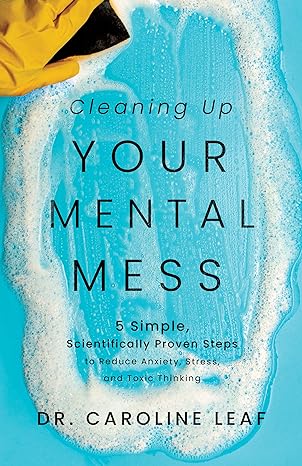
I’ll tell you all the things happening in the brain, maybe words explain the steps, and then you would say, “Okay, what are we going to do about it now?” “We went back, and we got another bagel. We had such a great morning.” You now start reconceptualizing, hoping they say, “This happened.”
Reframing.
Yes, reframing. That’s reconstructing it. You say, “Okay, so now we’re all happy. How about, do you want to eat your bagel now in the car, or should we drive to the beach and eat it? Let’s do an action together.”
What you’ve done is a very simple process that’s a very complex process that has changed the entire network in your brain and has built an activated resilience in your child. You’ve given your child the message that irritating things do happen, and we can get worked up. We can work through those. It’s okay to be a mess, but we can manage our mess. And you’ve modeled it.
Our kids are way more insightful than we give them credit for. I have some studies in the book showing that. They also respond extremely well to authenticity. When we’re authentic about, you know, “I did this, I’m sorry, I was wrong, this is why I did it,” and you’re working through that process, you are teaching them the tools to be able to solve problems to deal with the challenges of life.
You’re not wrapping them in bubble wrap. You’re not being a helicopter parent. You’re being a safety net parent, facilitating, teaching, and equipping them with skills. You’re also modeling. You’ve told them to do what you do. The best way to help children with a mental health crisis is, and this is not a huge crisis, but this is a little one, but they are big ones too.
It’s also big for them. In his world, it was humongous.
It was huge.
I don’t see it as big.
Our kids are way more insightful than we credit them for.
For him, it was a disaster. You gave him the skills to deal with it. If he has another thing that happens, it could be bigger or really bad. Maybe he gets bullied at school, and something really bad happens.
As you do this, what I call the NeuroCycle, this mind management process, as you do this daily as a lifestyle in all different aspects, you, your husband demonstrating, you’re doing good it with him. Maybe you pick him up from school or daycare, and he’s kicking the back of the seat, and he won’t talk to you, and he throws something up the car and has a full-on tantrum. Now we think, “Don’t do that.” We may yell at him because it’s very frustrating when a child does that, and you’re trying to drive, and it’s hot and all these things.
I’m just creating a scenario. I’m not saying your childhood did that, but this can happen. You can use the NeuroCycle in that situation where you can say, “Okay, look, you can’t kick my seat because I’m driving. But I do see that you are very frustrated, that you are kicking my seat. That’s not who you are; you’re not a bad person. You’re not naughty, you’re frustrated, but you can’t kick my seat now, so let’s stop. Before I drive, let me help you. Let’s do a little NeuroCycle.”
Kids love that word. They love brains. “Let’s change your brain. Let’s work through this.” Once you teach them the system, and in the book, I tell you exactly how to do this in detail with lots of examples, but what I have created to help children is this little character called Brain-ee. I don’t know if you saw it in the book, but this cartoon is throughout.
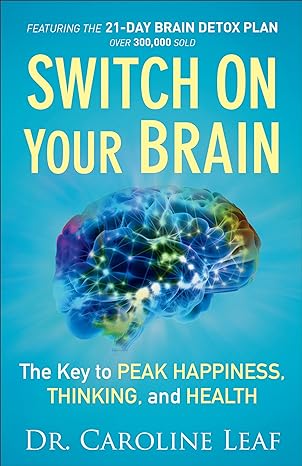
Basically, Brain-ee walks. He is a character created by a Disney artist about 25 years ago. We resurrected him for this book and had an artist update Brain-ee and whatnot.
Wait, he started his book 25 years ago?
No, the Brain-ee I created 25 years ago. The concepts that are in here, I’ve been developing for the last 38 years and applying with adults because I have all the material. I’ve been applying for them from 2 years to 80-90 years of age for years. This book is the first children’s book I’ve written. The books I’ve written and the app have been for adolescents and adults.
I imagine myself and my husband holding Brain-ee and talking about the NeuroCycle.
Yeah, there you go. Kids love it. That’s what I did in play therapy. We will do that with the kids. Let’s say your child gets in the car, and you have this in the car just in case they throw a tantrum. Then you could pick this and say, “Oh, Brain-ee crossed, and Brain-ee’s kicking the seat, and Brain-ee is rubbing his tummy. I see Brain-ee is very sad.”
You don’t say to your child that he is. You put up the child’s feelings on Brain-ee because Brain-ee is now this superhero who walks your mental health journey with you, who helps you when you don’t feel so good. You can fix his brain. You can help Brain-ee. You transfer the younger child to something like this, and the characters inside the book can relate to it.
You’re slowly teaching them. This is not something you do in one shot. This is a lifestyle I’m talking about: how to manage the big and the small challenges of life by modeling. By giving this little character, you take something big and scary. When a child has an experience at school, daycare, or wherever that throws him off, that experience is physically wired into the mind, brain, and body network.
When a child has an experience at school, or wherever it throws him off, that experience is physically wired into the mind, brain, and body network.
It’s like little trees in the brain made of proteins that change your cells. It’s an embodied experience. It’s real and then less processed. That can get bigger and bigger and drive your child and/or drive us, such as children. It’s humans; it’s how we function.
The whole point of the work I do is to equip people with the ability to understand, “I’m showing up like this because of something, and here’s how I can embrace that to deconstruct it, reconstruct it, and reconceptualize, and therefore manage,” and that activates resilience. The next time something comes along, you have more resilience to handle the next situation. That’s a big-picture walk-through. There are many little tips and techniques, and we can chat about some of those in science or whichever direction you want.
Yeah, thank you. To finish my story, I did some of what you said. I was like, “Hey, I noticed you were very mad at me. How did you feel?” He was like, “Bad.” “What did you think?” “I think you didn’t love me.” I was like, “You know I love you all the time.” I liked the depth that you’re taking it. I like making it a movie. I like recreating that memory. It’s almost like an NLP exercise, which I do.
That and so much more, though. It’s so much more than NLP because such a lot of cognitive action and unconscious intelligent action are happening. It’s also restructuring the network. That’s the five steps of the NeuroCycle of rewiring the networks in the mind, brain, and body connection look different in each part.
Let’s go to the five steps. What are the five steps for somebody who’s listening?
The five steps, the first thing you need to do is prepare your brain. For example, if your child’s upset, the first thing is to try to get a little calm. That could be anything from breathing to, say, “How many colors can you see?” or something that’s a bit of a distraction that helps to calm down the mind, brain, and body connection.
The earlier we help and support a child, the stronger they'll stand against life's storms. Nurturing resilience in childhood is the key to conquering life's challenges. Share on XIn the case of what happened with your son, you were gathering awareness of these four signals. Let me give you the five steps, and I can come back and walk you through. The five steps are to gather awareness, reflect, write, recheck, and active reach. You begin the five steps with brain preparation. It’s brain preparation, gathering awareness, reflecting, writing, rechecking, and active reach.
The combination with brain preparation is activating a network that has just been built from the experience. Before it can settle in and become something that drives you, you are putting that up into the conscious mind and changing protein structures, vibrations, and changing things in your cells before they become an established issue that could become a habit, or they could turn into something that’s a negative habit.
Everything in your network and network mind will come into your mind, brain, and body network, driving your function. This is your child’s experience and the response to everything going wrong. It can be so irritating. That’s still wired in the brain.
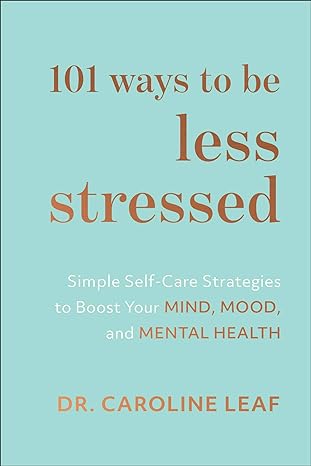
Some of the steps you’ve been through are the tips we’re going to if you gather awareness of four signals, your emotions. You’ve maybe said that you got frustrated or irritated and got mad. You tell him he got mad, you say your emotion, and you say your child’s emotion. It’s the first signal. That would include things like depression, anxiety, and any emotion.
The next one is that we feel that in our bodies. Maybe your shoulder is tense. Maybe your son suddenly felt a fluttering. Kids will say, “I felt jiggly” or something. You’d say, “Where did you feel that in your body?” And then you say, “Your behavior.” The next category you gather awareness of, step one, these four signals you get awareness of, is, “How did that affect your behaviors?”
You can say with your behavior, you shouted at him, or you told him to shush in not a nice way, and his behavior was maybe to cry. The next thing is perspective, view, and outlook in that moment. Your outlook was, “I’m so frustrated. It’s so horrible that we had such a nice day, and it was spoiled.” His little thing would be very simple. “I was happy, now I’m sad.” Now you’ve gathered awareness.
That’s like four little balloons, that thought, that network, that physical protein, chemical tree-like structure that has been wired into your brain. It’s also in every cell of your body as a change in your cells. I know it’s complex to understand, but it’s in three places. You make it weak. You’ve taken it before. Can you get solid and become a driver? Now you go to reflect, and that’s where you talk about why this happened. It’s reflecting the ‘why.’
The visualization is the third step, where all of it weakening the network, and it’s starting to change and turn it into something positive. It’s changing the network literally from being proteins that are twisted into proteins that are now untwisted. That’s a very simple way of understanding.
The twisted proteins will, over time, become problems because they contain twisted information, so it can make you react in the wrong way. This is a simple example but a great one to explain.
The combination with brain preparation is activating a network that has just been built from the experience.
The fourth step of the recheck is, this is what’s happened, “So what should we do? Let’s get another bagel. I can say sorry to you.” It made you say, “I can give you a hug. We can give each other a hug. We can talk about all the great times we had before all this happened and laugh about it.” That’s the recheck.
The active reach would be, “What are we going to do now? Should we sit and eat our bagel? Should we drive to the beach and eat our bagel? Should we go home? Should we play a happy song?” That’s simple. Once you understand it, you can do it really quickly.
That’s a simple thing that you’ve experienced. It was huge for him, but it’s a simple type of day-to-day struggle. Think of a scale of one to ten. That experience you describe is very nice. Thank you for that story because it was great to explain this. That would be on a scale of one, two, and three. What I mean by the scale is in life’s experiences, the things that are not nice are on a scale of 1-10, with one, two, and three being something like the story.
Yeah, that’s the number I got. I got two out of ten.
Not in terms of your management, what kind of experience, the type of experience, like an argument with your husband or getting stuck in traffic. It’s not massive yet; it’s just a little irritating thing that’s happened, and you can catch it and control it in the moment. That would be on the scale of things that happen to us. It would be one, two, and three.
Something that’s an eight, nine, and ten is the trauma—the sexual abuse, physical abuse, racism, and the big stuff that happens to us. That’s not going to be fixed in one little NeuroCycle. It will require a lot of dedicated work through a NeuroCycle with you, maybe with a therapist, over time. The timeframe is around about nine weeks.
It takes time to form a habit.
It takes time to form a habit. I’ve done a lot of research in this area. We’ve got a big study running where it takes two to break down a network and build a new one. It takes cycles of nine weeks. If it’s a big trauma like in the eight, nine, and tens, it may take you multiple cycles.
I’ve had some patients with very bad sexual trauma, and it’s taken him multiple cycles of nine weeks. Why nine weeks? That’s how long it takes to break down that twisted protein. The tree lacks thought structure with all the detail, which is the experience because every experience is a bunch of memories that cluster together to form a thought. And it’s a lot of detail. Every word I’m saying is a memory building into a tree in the listeners’ and the viewers’ brains of this conversation.
There’s a lot of stuff, and it takes time if something’s established. If it’s happened a lot, it will take time to unwind it. The stuff in the middle is between four and seven, so four, five, six, and seven are the bad habits we develop.
Maybe we get snapped at our husband once, don’t sort it out, and get into a pattern of getting irritated about stupid things. It can become a relational problem to get stuck on social media, and whatever you think about the most is growing in your brain. That then affects how you function and all that kind of stuff.
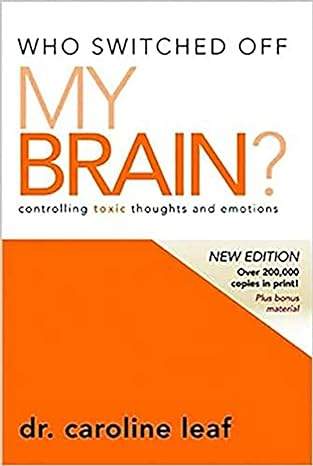
That would be the middle of the road, requiring a different timeframe. Your story would fall on the day-to-day struggle, and you could fix that in one NeuroCycle. The middle of the scale is a social media habit or whatever. That habit is going to take at least nine weeks. The traumas are going to take multiple cycles of nine weeks.
You can fit anything into this NeuroCycle. You can fit any type of meditation, any technique, and any positive affirmation. You just have to put it in the right place. It’s a framework for how you manage your mind and rewire your brain’s networks so that you can keep moving forward in life. It’s a lifestyle, and that’s what I explained in the book.
Yes. I’m jumping ahead. I know it’s not in the order in the book. You spoke about school and bullying. My son has been homeschooled for the last four years and will start school in a week. I don’t know how to handle it. I’m really afraid that even though I like the school and the teachers, they all look amazing, I’m not there. I don’t know what they’re going to tell him. I don’t know how other kids are going to treat him.
How do I recognize that he’s doing well? How do I recognize that they are treating him well? Or if there is a problem, what kind of conversations do I have with him before he’s attending school?
That’s an excellent question. I’m doing a whole seminar on this because this is a concern for many people. In a nutshell, it’s you going through the NeuroCycle being very authentic, open, and saying, “You’ve been with me for four years, and now you’re going to all these other people.” Tell him how you feel, that you feel a little bit nervous. “Do you feel a little bit nervous?” Because he’s going to pick up your anxiety, even if you say it’s better for you to talk about it and say, “I know it’s going to be lovely there.”
In other words, go through a NeuroCycle to explain how you are feeling and ask him at the same time how he’s feeling. By getting it in the open, when you get to step four, which is the recheck, that’s where you reconceptualize. It would be, “I’m feeling a little nervous. I’m feeling a knot in my stomach,” and he says, “I’m excited,” or “I’m scared,” or whatever emotions you go through. Each of you gathers your four signals, and you gather his four signals. Or you can do yours first, and then you can do his.
NeuroCycle is a framework for how you manage your mind and rewire your brain’s networks so that you can keep moving forward in life.
What I have in the book are ages—a developmental table. If you’re talking with a three- to five-year-old, and your son’s four versus a five- to seven-year-old versus a seven- to ten-year-old, it’s the kind of language you would use.
The simple things like, “How do you feel about going to school? Are you scared? Are you excited? Are you happy?” You might have to give a little prompt, or you could use the cartoon or pick up a toy if you don’t have Brain-ee and just say, “I wonder how Brain-ee feels about going to school. Is Brain-ee excited?”
You reflect and go, “Well, I feel this because I’ve been with you for four years, and now other people will teach you. It’s so exciting, but I have to learn how to feel about that too, because I want them to teach you everything’s so nice, and I want them to be kind to you, but maybe not everyone will be kind. I’m always here for you.” It’s starting to reflect a little, but then you could visualize and create a scenario.
“Let’s imagine it’s the first day back at school. Let’s picture that. How are you going to feel? Let’s talk about you in the classroom. There you are in the classroom. Let’s draw a picture of you in the classroom and me saying goodbye.” All the preparation is coming in. Yes, we would feel sad, but still excited. It’s not just who on the day.
I think he’s going to be fine, and I’m going to leave and start crying.
Of course you are. It will be, and he will either do the same thing. But you’re going to have to be brave to do that. You’re probably still going to cry, but you’re going to be happy. It’s happy tears because if you can’t hold in the tears, or he goes off and then you cry. Allow yourself to because otherwise, you will keep it inside, and he will read that anyway.
Embrace the beautiful ups and downs of parenting, for in the mess, we find the moments that truly matter. The key is not perfection but skillful management. Share on XLook how he said to you, “I thought you didn’t love me.” If a child doesn’t understand why you’re reacting, they’re going to think you don’t love them, there’s something wrong with them, or they are bad. That’s why it’s so much better to say, “I am a little bit sad about you going to school, but I’m also very excited. And this is a good thing. But I’m still sad because I love being with you all the time.” It’s good to say that thing to a child.
“It’s not wrong with you if I cry because I love you so much, and I’m going to miss you, but I’m also crying because I’m so excited for you. I’m so excited for you.” It’s that kind of conversation, and it works through that.
I would do it a little bit every day. I could do a NeuroCycle every day with different scenarios that you prepare. “Let’s say you’re on the playground, and someone may say something horrible. Let’s practice how we would handle that. Let’s be kind when someone is horrible to you,” and you can get the toys and enact it. Or “Let’s start with a situation where if someone’s kind to you, how will you share your lunch, or how will you play together?”
Start working through the NeuroCycle with positive things, but create a couple of scenarios.
Start working through the NeuroCycle with positive things, but create a couple of scenarios that if they do suddenly, someone does because kids will, they will be a bully, and maybe your child will be fine, but someone is going somewhere down the line, do something. “Not everyone likes you” and that kind of stuff. That brain is a bit ugly to that brain, or you can take tutorials.
Let’s talk about that. That makes you feel sad. You can just go straight to the point where you get to the recheck. “How can we solve this problem? We can walk away, be kind back, and offer to share our lunch.” If they take it, you can say, “Look, I don’t mind sharing my lunch with you.” You can go and tell the teacher if you’re very sad. You’re allowed to cry if you feel sad.”
It’s giving them the tools to say, “It’s okay to be messy. Things may be a bit messier. Things are going to be exciting.” It’s talking about it, but it’s in that sequential way. Why is it in the brain in an organized way that when they’re in the situation, it’s on an unconscious level? We’ll move into the conscious mind and guide them in that situation. Does that make sense?
Yeah, it makes sense. Of course, my brain goes to the worst-case scenario.
Of course, we are parents. You’re a parent.
What if the teacher treats him badly? How can I extract that information or teach him how to handle this? I already explained to him that some kids behave nicely and others don’t. Some adults are the same. I told him, “If somebody is hurting you, you always have to come talk to me.” I’m sure you’ll have more juice from me here.
Always look at the signals. Signals are information, and they tell us something. Signals are those emotions, behaviors, bodily sensations, and perspectives. When you see your child come home from school, observe them. Just make a mental note.
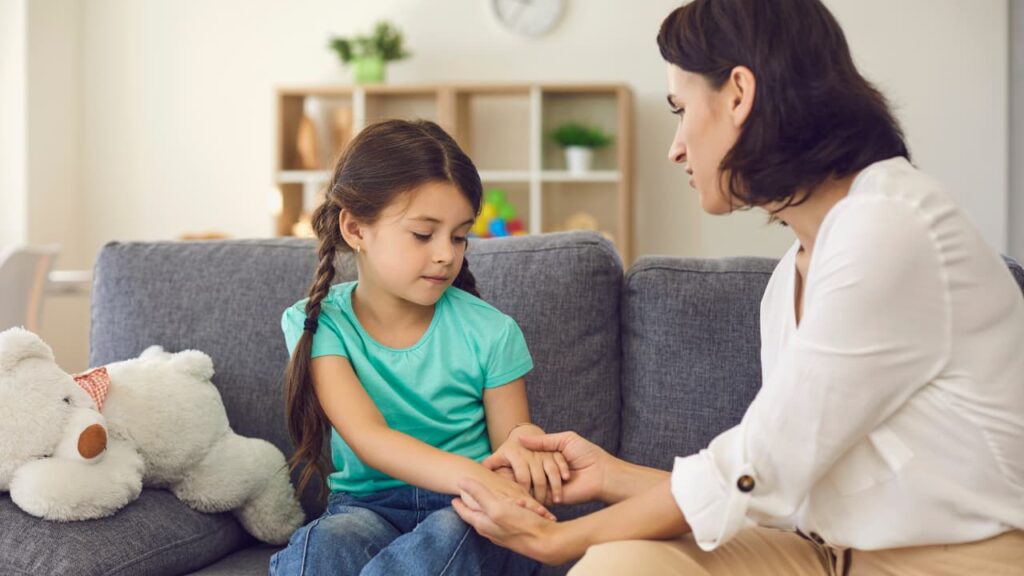
You may have a little journal somewhere or put it on your iPhone. But just observe your child and do a NeuroCycle observing your child. Do not say anything initially, but just look at the emotions. In your mind, he seems a bit sad today, always really happy too. It doesn’t necessarily always have to be negative.
On the positive side, that’s great. I bet it’s easy to pick that up; you won’t worry about experiences on the negative side that will be more scary, but you don’t want just to be carried again. You want to be very organized. That will help you get more wisdom and clarity, see things, and have the right wording.
In your mind, observe. “What is his emotion today? What are his behaviors today? How is he looking at life today? Is he excited? Is there something different about his perspective? Is he complaining about a sore stomach or something or anything? Is there something going on at school?” Just do a NeuroCycle in your mind and then observe it.
See if it’s just a one-off thing or a pattern. If it’s a pattern emerging, something is going on. That’s when you can then sit down with him. This is what I recommend, and I did this with all my patients in therapy. And I’ve taught thousands to designate a space in your home like a little corner. You may have a blank wall, and you can paint the chalk paint on the wall, and you have a little set of art supplies, chalk, and a nice little cushion. You’ve got Brain-ee in the book and some other toys.
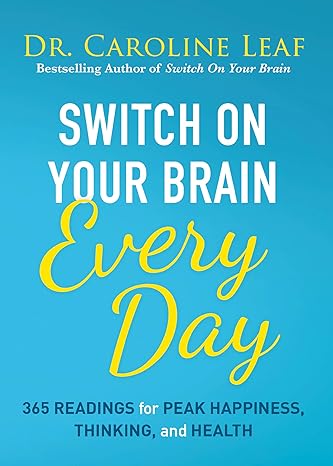
When you feel bad, you sit there and talk through your feelings. You demonstrate to him and say, “But when you want to talk about stuff, then we come and sit here at the space.” You don’t have to always do it there, but it’s like a training thing that they know that that’s a designated space. If they don’t know how to tell you something, just going to sit there is already an indication that something’s going on.
Does it matter where in the house it is?
No, just let them choose. It doesn’t matter where it is in the house. You have that space because it opens the door to conversation. It’s safe that they can go there. Even if they don’t say anything, just sitting there, maybe they pick up the toy. It’s an indication to you that something’s not right. If you’ve done this practice, they know that that’s the safe space. I will come and sit and say, “Okay,” and then you can start prompting with the questions.
In the book, I’ve given the questions to ask for the warning signals. Let me quickly grab the table here, and we can show everyone. This table, for example, is the helpful guidelines. It looks like this, and I’ve got the mind, a three- to four-year-old, how they think, feel, and choose at that age, how they socially interact, and the kind of language you can use with this age group.
For example, you could get four shoe boxes, and you cover each shoe box. Or you buy four nice little boxes, and then you cut lots of pictures out. This is something you could do before you go back to school. It goes in each box. This one is an emotion picture. Get as many magazines as possible, anything with someone smiling, happy, cross, or as many scenarios with adults and children.
Keep collecting because you won’t find everything in one week. Every time you see a real picture, just cut it out and put it in the relevant box so your child can sit in that corner with your special space. They can dig through the boxes and pick up, and this is what happened. Maybe he will pick up a picture of a teacher or a person shouting, and they don’t know how to say it to you. But they can actually pull it out of the box.
They can pass it to you, put it on the table, or do a squiggle on the wall or whatever art supplies, but it’s giving them those tools to start expressing that. In terms of prompting them, I’ve got a table here.
If your child shows a pattern emerging, something is going on.
A warning signal table has actually got how you ask the questions to a three and a four-year-old. Of course, because I’m talking, I can’t find it. Let me just skip this table, but here we go. It’s a table that looks like that. It’s coming out upside down because of this mirror image thing. The warning signal, the first one, is emotion. The second one is behaviors, bodily sensations, and perspective, then I’ll say questions to ask them. I’ve given you some examples.
Ages three through five are just very straightforward. “Are you sad? Are you mad?” Give them the word. I’ll give you some examples of emotional words you can use. If it’s a child six to ten, it’s more, “What are you feeling?” With a younger child, you give the words. Whereas the older child, you ask the question, “What are you feeling?”
They can either say it, demonstrate it, or pull it out of the box and then you could do the same thing with the behaviors. With a three to five. “I see that you don’t want to eat your lunch, or you’re having nightmares, or you’re not smiling when I pick you up from school.” You can observe.
The younger child, you’re making an observation of behavior. No judgment, all very calm. If you’re anxious, first, do a NeuroCycle to calm down your anxiety so that you become responsive and not reactive. It’s okay to be responsive or reactive but then catch and fix it.
Bodily sensations. You could say something like, “What is sore? I see that you’re pulling out your ear.” Sometimes, children will develop a little funny habit. If distressed, they may pull the ear, do things like this with their hands, or have a little movement.
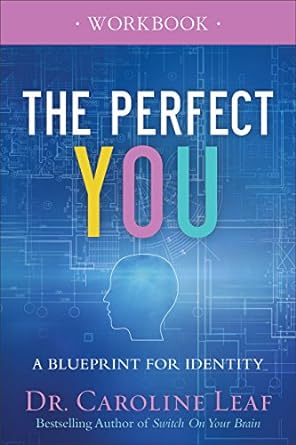
Yeah, he does that. Sometimes, when he’s stressed, that little shoulder movement.
A little shoulder move. Be aware of those and watch for them. If you see it, it’s just a one-off thing, then it may be okay. But if it’s a pattern, if it’s regular, and you can start seeing hate—every time I pick them up from school, he’s doing this thing with his shoulder. He’s starting to have nightmares. Be aware of looking for those things.
The easiest way is for you to become familiar with the concept. It’s very easily explained in the book for parents to understand the NeuroCycle, practice it on themselves, and become very observant. It trains you to be very observant, which is really nice. Not just a fearful observance like, “What can I do?” You can be very specific. You’re looking for this or that.
You can have your own little journal. “I’m observing these signals, I’m going to reflect on them, I’m going to write them down.” You get yourself information, recheck. “I’m going to talk to the teacher,” and you watch it over five days. Maybe your active reach, the first step, is “I will observe this for five days.”
In five days, if this is a regular pattern, I will go to the teacher, present my notebook, and say, “Listen, since last Monday, I have seen this.” You can be very specific and say, “Something’s going on Did you notice something in the classroom?” But you’re not going in saying, “I’ve noticed.” It’s not random. It’s organized. You’re going there with data.
You’re going with data—observed organized data. It’s not accusatory, but you’ve got information organized to go and say, “I’ve seen this for five days, or I’ve seen this for two weeks. This never used to be. There’s something different. Something is going on.”
That’s awesome. It’s helpful. Also, to go even deeper with my fears, the movie Sound of Freedom is very popular now. I saw Tim Ballard speaking at a Tony Robbins’ event about a decade ago. I was very moved by what they were doing. It’s amazing to show this movie and bring awareness.
I also went to this lunch fundraising for the organization and all that. It affects me as a mom with the fear of predators. I don’t know how to prepare my son for, God forbid, something like that. What kind of conversation do you have with a child so small?
If you need to prepare your children for bad things that can happen. We should not put fear into children because, as you all know, if you have a conversation that they’re not taught, it’s not going to help. The best way is to find a movie that’s like a cartoon that shows some bad things happening.
That’s not very scary. Bullying is terrible, but it’s a cartoon where someone is so scary, or even a storybook. Read a story of a child feeling sad because they’re in a new school, their parents are getting divorced, or something. Reading is even better than the movie through the medium of the story and reading that to the child for the resolution. It’s not just left open-ended that a bad thing happened, and no solution came. You actually have a solution.
I would use a lot of reading. That’s what I would always recommend. Read as many stories as you can that are fun and happy but have a bit of a challenge and a problem. They are aware that not everything is wonderful. You’re going to have to also teach them that you can’t trust everyone.
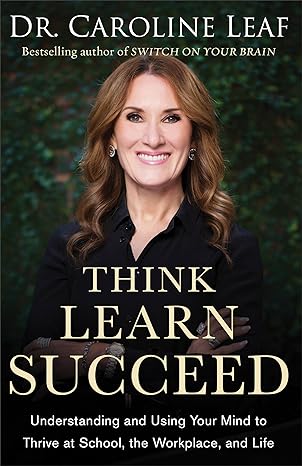
And you’ll have to be able to tell the children that, “If anyone does anything to you, it makes you feel uncomfortable. They tell you not to say to me that it is wrong. You can always tell me. You can always come to the chair.” That’s what we found very effective for children with trauma. It all comes together.
Very often, when a child is traumatized, or something bad has happened, an adult has touched them inappropriately, they are threatened by the adults not to tell them, all this manipulation. They’ll give them a toy or something. It’s very distorted, as we know. You’ll see a behavior change in your child.
If they’ve got a place to go to, if they come into their house, and they can pick up a toy, or they can pick up something that is a designated concept where they know that they don’t know how to say the hard words, but they can draw something on the wall, and they may be on their chalk wall that you can chalk paint on a wall, that is a great way. Kids love to draw on chalk paint.
They may do that. If something happens, and they go, and they maybe draw something that looks like a squiggle, but it’s someone touching them inappropriately, they know how to go to that space and use that space in that way. I would find stories with levels of challenge and ensure you mix them with a lot of very happy stuff. I would do the more challenging ones as a lesson during the day, not before they go to sleep.
You’re making them aware that there are bad people out there who will do bad things, but there’s a solution. If you tell me, I can help you. There are a lot of children that have been sexually abused, especially around the ages of 18 months to two years.
There’s a story in the book of a child who was abused in the trauma chapter. He was abused for three months by her mother and her boyfriend physically and sexually. It’s a very sad story, but it has a great ending. The stepmom happened to be on one of my research teams and learned about the NeuroCycle, and she decided to apply it to herself because she was so traumatized by that child’s trauma, and it was so difficult. He couldn’t go to school, and he couldn’t sleep. You can imagine it if you label it under the sun.
She was traumatized and now has been just trying to manage the situation. She used the NeuroCycle, I don’t even know, just to help herself and her stepson, who was traumatized for three months. They knew there was trauma going on, so they’ve gotten all the therapies and everything. There’s a little bit of help, but he was still begging to sleep, still had behavioral problems, still couldn’t go to school, still had terrible tantrums, and had every label under the sun.
Our children are emotional sponges, absorbing our stress and mirroring our emotional resilience. The power to shape their emotional world lies in how we manage our own. Share on XShe was desperate. She was getting reactive, which you can understand. It’s a very difficult situation. She did the NeuroCycle, and she changed. She was learning how to process herself. If she got mad or got frustrated, she could say, “Look,” and she would do a NeuroCycle with him. He turned and said, “Mom, you’re different. What are you doing? I want to do that with you.”
She taught him the NeuroCycle. Within four days, this child was sleeping. After that, he was able to use the NeuroCycle to start talking about the incidents that happened because before, he just didn’t know how to get them out. He had a way of communicating the experiences slowly over time. They could then work through that as a family, helping process it and get the necessary support therapeutically.
What I would also do in my therapy is to create an environment that opens the network of the mind that you could actually get stuff out of that you don’t know how to get out of because it gets locked away. Trauma tends to lock things in. It’s a heavy conversation, but it’s necessary in this day and age.
It’s so necessary. It’s almost a taboo. We don’t talk about those things enough.
Yeah, it is. We have to talk about these things. We have to. As I said, these ways of doing it, there are some incredible stories out there. You can start reading things to your children, storybooks. We’re writing a series of storybooks on scenarios.

I wanted to ask you. I’m like, “Can you please write something like that?”
Yes, we have created a whole universe with Brain-ee, and the first three books should be out hopefully in the next two months.
Oh, my goodness. Congratulations.
Thank you so much. That goes for this whole kit. We also have a coloring book, which we will have a series. I’m trying to find it. Here is a scenario of a child being bullied. We will have a series of coloring books with different scenarios, and children can then go and point you in color.
If they don’t have the words, if they are pointing at a picture, or they’ve got a way of saying this is what’s happened, or the shoebox idea where you collect pictures, it’s a way of a child being able to communicate that something’s not right. You may not have all the pictures, but children will be innovative. They’ll pull this picture, this picture, and they’ll create a scenario if you practice that with them.
Yeah, it creates a beautiful intimacy between the parent and the child. If I practice, I already have a good connection with him. I make up stories every night.
That’s very cute.
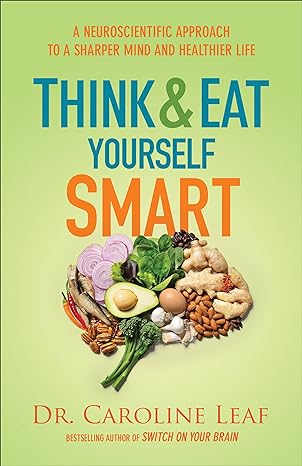
But sometimes, through the stories, we process things happening throughout the day.
This is just an incredible tool. I love the idea of the boxes. I love the idea with the pictures. I like your coloring book. I like the wall that he can draw on. This is just incredible. What a beautiful way. Thank you so much for doing what you’re doing.
My pleasure. Thank you for understanding and seeing it. Being a mom, you’re getting the idea. These are scary things to talk to our kids about. But if we’ve got these tools, we can give our children these.
There are so many different ways. Once you get into your own creativity, it will come out. I’ve got tons of ideas in there. We’re also creating storybooks, and we’re creating more coloring books. We’ll also do an animated series, that kind of thing. We will handle the heavy stuff, too and help you know how to process through situations.
Where can people get this beautiful book that I’m holding?
Thank you. They can get it to wherever books are sold. The Brain-ee and the coloring book are available on our website at drleaf.com. I’ve got a store on my website.
The book is How to Help Your Child Clean Up Their Mental Mess.
That’s it. My social media handle, where I have a lot of information, videos, and things, is @drcarolineleaf. I also have a podcast, Cleaning Up the Mental Mess, for adults and children. At the moment, there’s a lot of children’s stuff around the release of the book. I do have a lot of scenarios and things.
I have an app. I have a mental health technology platform. It’s called Neurocycle. It’s for adolescents and adults, but we’ve got a whole parent to add on the different scenarios, like how to help your child prepare to go back to school and recognize when your child’s being bullied. Those partners with the book will be in the app. We’re building up as many resources as we can for parents.
Signals from our children are valuable insights; they speak through emotions, behaviors, bodily sensations, and perspectives, guiding us through their inner world. Share on XThe app is also great to use with the book because you can use the app for yourself. In the book, it’s the same, Neurocycle, but it’s adapted to children, teaching them how to understand thoughts, memories, the brain, and all these things that kids love. Kids respond to this so quickly. They love brains and words like NeuroCycle. It appeals to the insight.
I love that. My son knows all the dinosaur names, which are long names.
They do. They learn all these big words and get to these concepts very quickly. So cute.
Thank you, Caroline. Thank you so much. It was incredible, helpful, and insightful. I appreciate you being here today. Thank you for everything you do in the world and how you imply children and families. Thank you so much.
It’s my pleasure. Thank you, Orion. Thank you for having me on your show. I hope it helps you, your son, and everyone listening. We need to be proactive and give our children the tools to manage their mental health and they’ll go into adolescence and adulthood differently, more equipped.
Yes, thank you. Thank you, listeners. Thank you for being so caring to parents in a conscious way and helping your children. Just trust yourself, trust your gut feeling, and use the tools Dr. Leaf shared with us today, and have a stellar life. This is Orion till next time.

